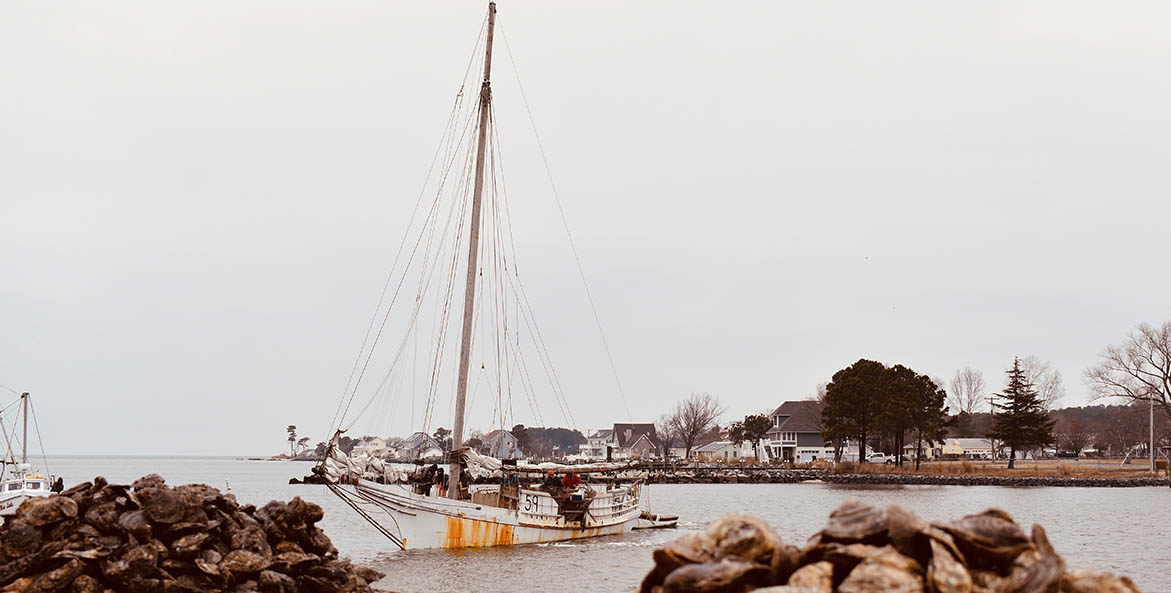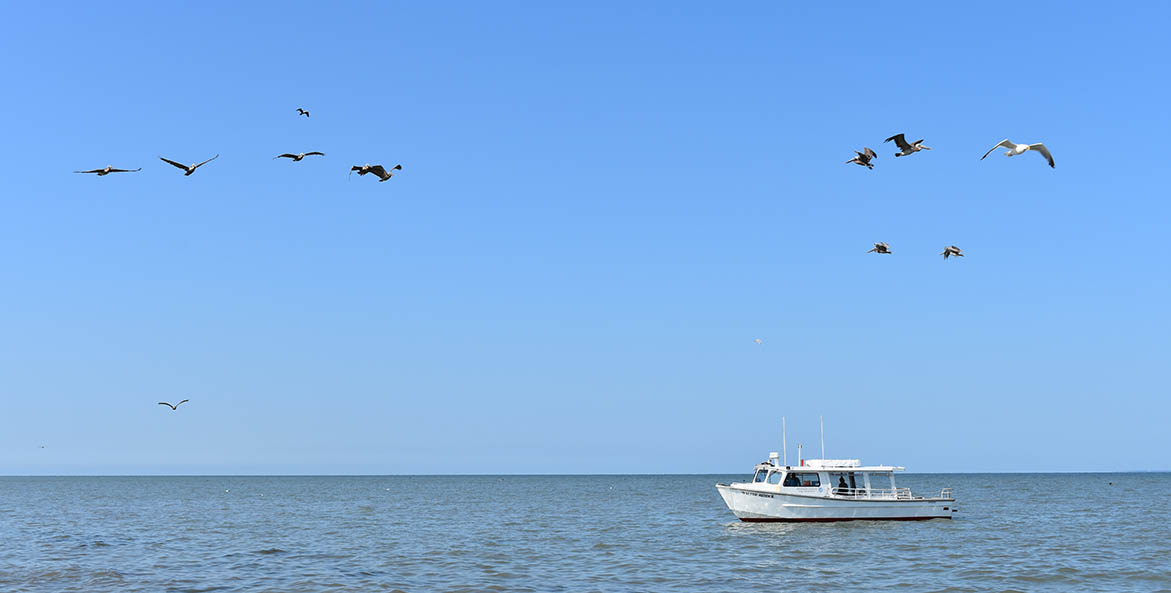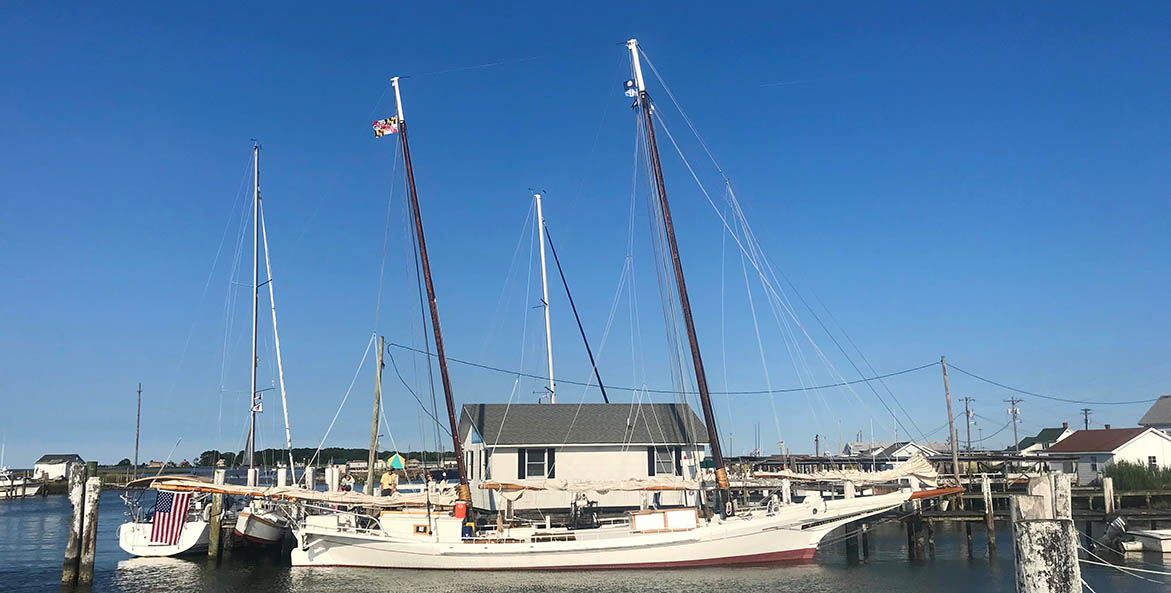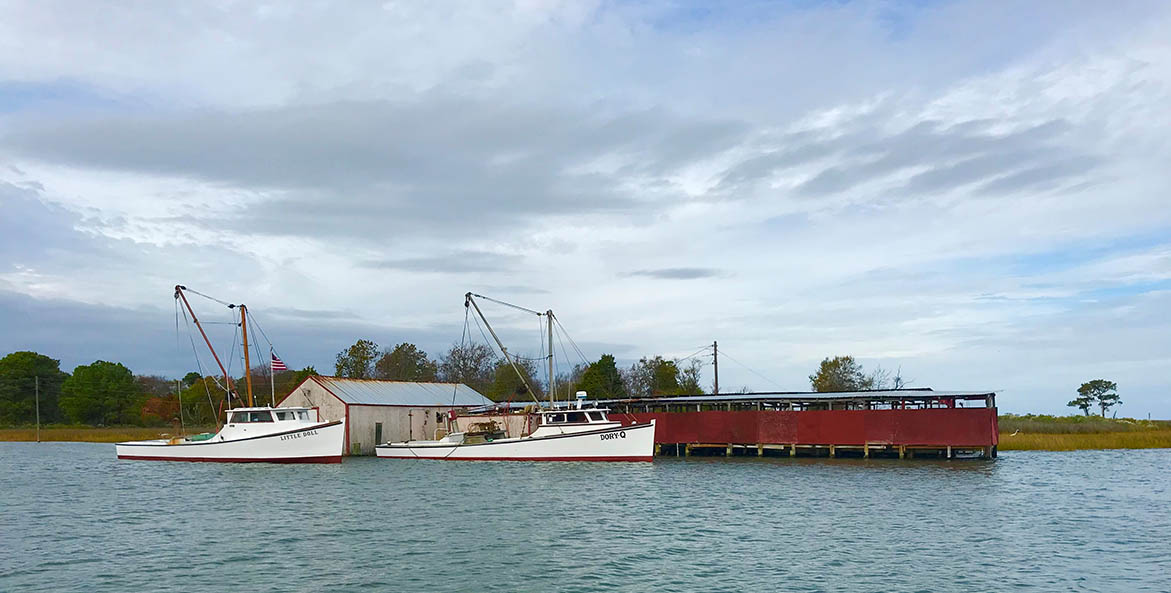See the complete Nature Journaling series.
Spring is the time of year on the Chesapeake when we bid farewell to the oystering skipjacks and welcome back the hardy deadrises and Bay-builts of crabbing season. For most, the saying "spring has sprung," may lead to thoughts of sunny daffodils and spring peepers singing. But for Chesapeake watermen, it's the blue crabs emerging from their muddy slumber that announces spring.
Shoulder seasons on the Bay, spring and fall, typically bring gales of wind. For the wintering skipjacks, this wind fills the sails in this wooden fleet fishery, the last commercial sailing fleet in the United States. Skipjacks aren't the only boat on the Bay pursuing the illustrious oyster, but their legendary shape and silhouette are recognizable to many. With a single mast made from loblolly pine, a wide spacious deck, and low freeboard, skipjacks are built to oyster.

The skipjack "H. M. Krentz" returns to port after a day working the water near Deal Island, Maryland.
Morgan Jones/CBF Staff
Crabbing season legally starts on April 1 for Maryland and March 17 for Virginia. Watermen ensure their boats will be ready by the first day of the season but won't bother wasting time or fuel if water temperatures aren't right. Blue crabs wait for water temperatures to warm to around 50 degrees Fahrenheit to start moving. When it comes to a crabbing boat, on the eastern shore, you would most likely hear the word "deadrise" muttered from the mouth of a local. Across the Bay on the western shore, you would be more likely to hear the term Bay-built. Both refer to the same type of boat with a substantial flair in the bow, a V-shaped hull that flattens out towards the stern, a cabin in front and a large working space in the back. Deadrises and Bay-builts reflect a classic style of boat built on the Chesapeake Bay that were made to work the water.

CBF’s deadrise, the "Walter Ridder", is used on environmental education programs.
Morgan Jones/CBF Staff
Art Prompt: The Silhouette of a Boat
Materials Needed: nature journal or paper, pen or pencil, coloring materials* (*optional)
Assignment: Boats like the skipjack and deadrise are built to serve a purpose. Every detail of these boats from their size and shape to their steering wheel location has been strategically planned. Even subtle differences in the lift of a bow or the build of a stern can classify a boat under a completely separate name. Larger differences such as the number of masts and the type of propulsion can categorize a boat into various groups.
If you have the ability, find a boat to observe whether it's in a harbor or marina, a boatyard, or out on open water. You can also research a type of Chesapeake Bay boat on the internet. Allow your eyes to trace the outline of the boat. You can begin to jot down specific details and observations in your nature journal or on one side of your paper. Then, start to draw the silhouette or side profile. Begin with the hull or body of the boat. What shape is it? How far out of the water does it rise? Next, move to the deck. Where is the steering station? Is there a cabin? You can also add details by drawing any items you see on deck. Moving upward, are there masts and sails? How does the boat move? Is there an engine on the back?
Once you have completed the general silhouette of your boat, feel free to add further details such as color, dock lines, a name, or any decorative touches. You may also draw the scene the boat might be built for. Does it appear to be able to handle deep water and big waves or is it better suited to navigating through the shallows?
Additional Resources:
- Ten boats of the Chesapeake Bay
- Pungies, Bugeyes, and Skipjacks: Your Guide to Chesapeake Bay Workboats
- Chesapeake Bay Boats
Further Questions: What does your chosen boat seem to be built for- transportation, recreation, catching seafood? Can you identify the specific type of boat you have chosen?

The Bugeye "Edna Lockwood" docked on Tangier Island, Virginia. Bugeyes are also used for oystering, but they are distinguished from skipjacks by their two masts.
Morgan Jones/CBF Staff
Writing Prompt: Keeping a Captain's Log
Materials Needed: A journal or piece of paper, pen or pencil, ruler (optional)
Assignment: Captains have been keeping logs of their time at sea since the very first ships were sailing. These logs contained records about speed, weather conditions, crew, cargo, ports, and any other observations or stories that were notable during the journey. They have proven to be vital in passing on important information and expertise on navigating certain areas at sea and have also helped to shed light on mysterious tragedies like shipwrecks.
Pretend that you are the captain of a boat or ship and begin writing your own captain's log. Make sure you are making enough rows and columns to include dates and times, ports you are leaving from and arriving to, weather events, and other interesting stories that happen while you are at sea. Be as creative as you want and try to notice small details that might catch a captain's eye. Will you encounter a big storm? What sea life might you encounter? How long will your journey be? Try to make your captain's log cover about a week's time.
If you are feeling unsure of where to start, observe your current weather conditions. Does it seem to be a good day to be out on the water? What challenges might the current weather conditions cause? You can also think about what kind of boat you would want to captain and what responsibilities you would have.
Additional Resources:
Further Questions: Why might a captain's log help to reveal historical health of the Chesapeake Bay? What aspects of a captain's log do you think would be the most important/most interesting?
Check out more Nature Journaling prompts.



